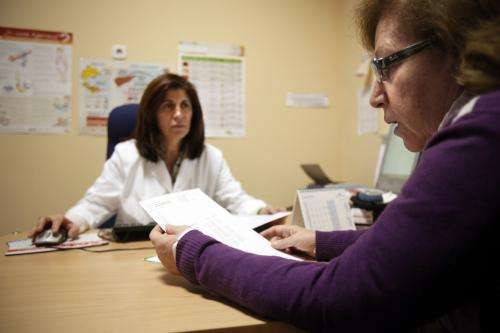Analgesics prescribed more heavily to women than to men, study finds

Regardless of pain, social class or age, a woman is more likely to be prescribed pain-relieving drugs. A study published in Gaceta Sanitaria (Spanish health scientific journal) affirms that this phenomenon is influenced by socioeconomic inequality between genders in the Autonomous Community in which the patient resides.
In 1999, a researcher at the University of Harvard, Ishiro Kawachi, observed that in the states of the USA with a larger proportion of women with a high social class, mortality in both genders was lower.
Inspired by Kawachi's studies, experts at the University of Alicante have identified how social and economic inequalities between men and women - known as gender-related development - influence the prescription of analgesics by area of residence.
"In Spain, as well as in other countries, women suffer from pain more frequently than men, therefore it is logical that they are prescribed more analgesics," Elisa Chilet Rossell, main author of the study recently published in the Gaceta Sanitaria, explains to SINC.
However, this analysis goes one step further and affirms that, regardless of pain, social class and age, being a woman increases the probability of being prescribed analgesics. "It also depends on whether the patient lives in an Autonomous Community with lower gender development, regardless of whether the patient is male or female," Chilet notes.
For this research, the authors used as their main source of information the 2006 Spanish National Health Survey and the United Nations' Gender-related Development Index (GDI), which distinguishes between the development indices of men and women according to life expectancy at birth, education and income.
With this information, they performed a logistic regression analysis to compare the prescription of analgesics by sex in the areas with higher and lower GDIs than the Spanish national average. The results confirmed a gender gap of 29% in the prescription of these medicines.
"The gender bias found could be a way in which inequalities in treatment with analgesics negatively affects women's health," the researcher highlights. "In this way, women receive treatment for symptomatic pain more frequently than men, treatment which can be unspecific and blind to the causes of the pain."
Women are less often seen by specialists
The authors also found that women who suffer pain and live in a context of lower gender-related development are less likely than men to be seen by specialists and tend to be seen only in primary care.
For these experts, by considering GDI this research contributes a new layer of context to the analysis of inequalities in the prescription of analgesics, and demonstrates that political and economic factors in society influence health problems and their treatment.
"Research on the suitability of analgesics and the medicalisation of women should take account of factors within this environment, as it entails a high cost in terms of women's health and increases pharmaceutical costs, an important consideration in the current climate of economic recession," Chilet concludes.
More information: Chilet-Rosell, E. et al. Inequality in analgesic prescription in Spain. A gender development issue, Gac Sanit. 2013;27(2):135–142

















